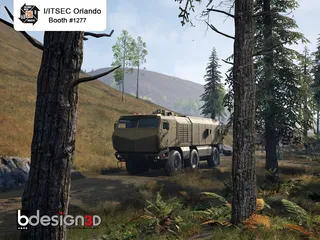US Air Force Training Effort Bridges Simulator Gap
Contact Our Team
For more information about how Halldale can add value to your marketing and promotional campaigns or to discuss event exhibitor and sponsorship opportunities, contact our team to find out more
The Americas -
holly.foster@halldale.com
Rest of World -
jeremy@halldale.com

An innovative effort by the US Air Force and led by Lt. Col. Michael DeVita of the 11th Bomb Squadron, aims to bridge the gap between simulator training and real-world experiences for student pilots assigned to the jet's Formal Training Unit (FTU).
The effort by FTU leadership is bringing contract instructors on B-52 sorties to improve student pilot training. The move to bring academic instructors on training sorties stems from past and upcoming improvements to the B-52. Those improvements have created a gap between what instructors can teach in the simulator and what student pilots encounter when they initially fly the jet.
"Modifications have been made to the B-52, but not the simulator," he said. "So we constantly focus on how to make up for the differences between what students can learn in the simulator versus what they experience in reality," Lt. Col. Michael DeVita, one of the FTU leaders and 11th Bomb Squadron commander assigned to Air Force Global Strike Command's 2nd Bomb Wing at Barksdale AFB.
For William Pedeaux, a contracted B-52 Stratofortress academic instructor, bridging that gap in the simulator requires a mix of practical experience and theory.
"The fundamentals of flying the B-52 are the same, but the mission has changed so much," said Pedeaux.
A B-52 crew can now receive digital target taskings via satellite from Air Operations Centers around the globe. The crew can seamlessly plug the target coordinates into the aircraft and fire a precision missile hundreds of miles away or drop a bomb below without ever talking to someone on the radio.
That fundamental change is behind the stark contrast between the simulator and the jet.
DeVita and Pedeaux said the most glaring difference between the simulator and the jet is the Combat Network Communications Technology (CONECT). This communications modification came online in 2016 and serves as the digital backbone of the jet. CONECT allows aircrew to receive digital tasking messages and real-time intelligence and threat data from multiple sources.
"I can't teach CONECT in the simulator simply because it isn't available," said Pedeaux.
To compensate, students use computer-based testing to learn about CONECT while in the simulator. The only get to use it when flying the B-52, taking valuable training time from other important training items like aerial refueling.
"It's frustrating for us and the military, but that's the nature of the beast," said Pedeaux.
The immersion flights are designed to alleviate that frustration by letting academic instructors see CONECT in use during an actual sortie.
DeVita hopes the firsthand knowledge will translate to the students and increase the academic instructors' credibility when they teach CONECT.
These outside-the-box training ideas have become almost routine for the 93rd and 11th BS, whose laundry list of recent innovative ideas includes virtual reality trainers to teach in-air refueling and cockpit checklists.


